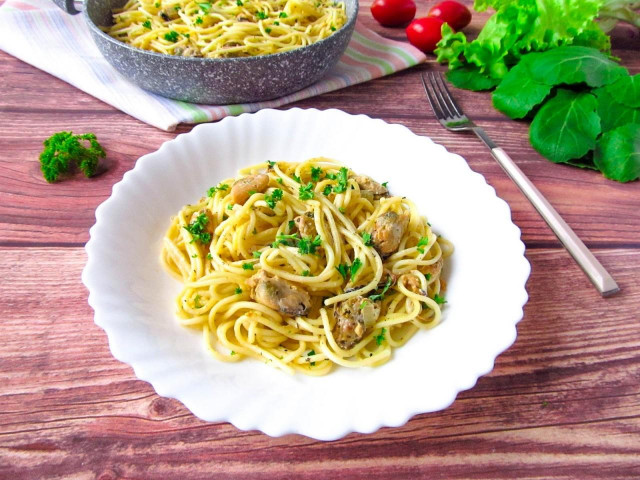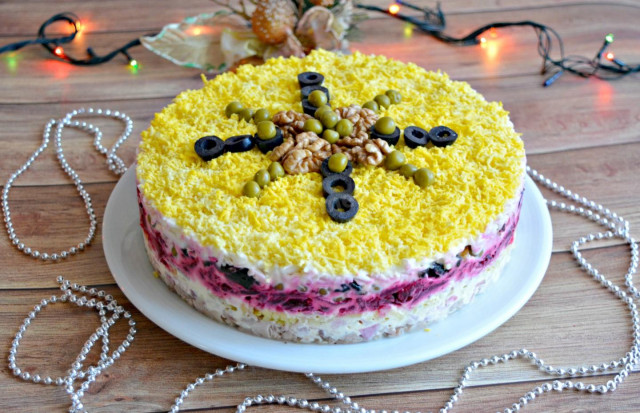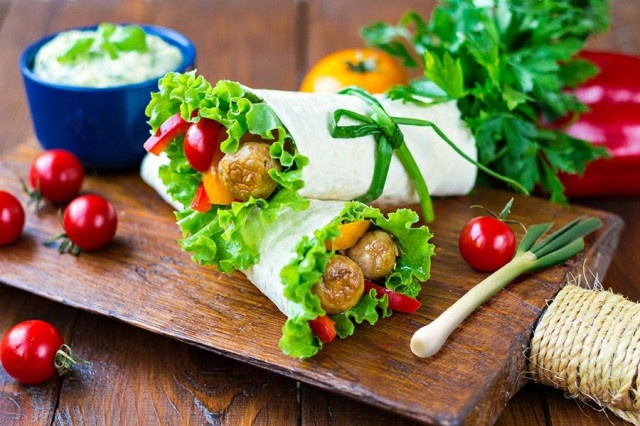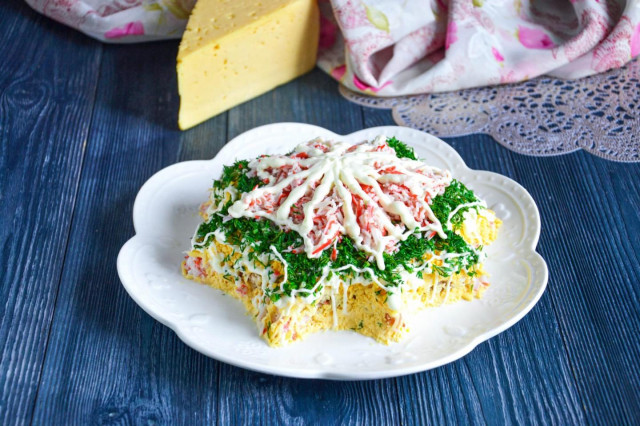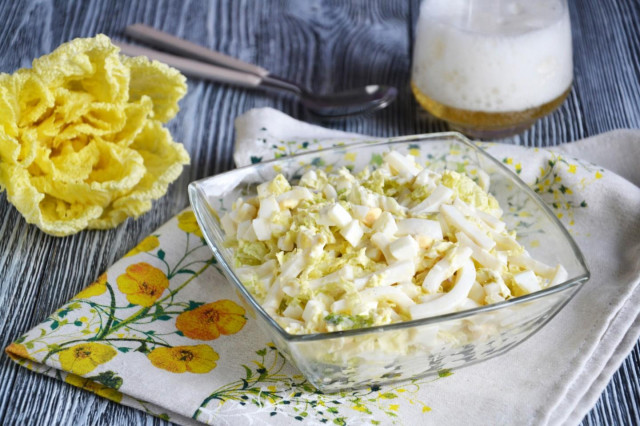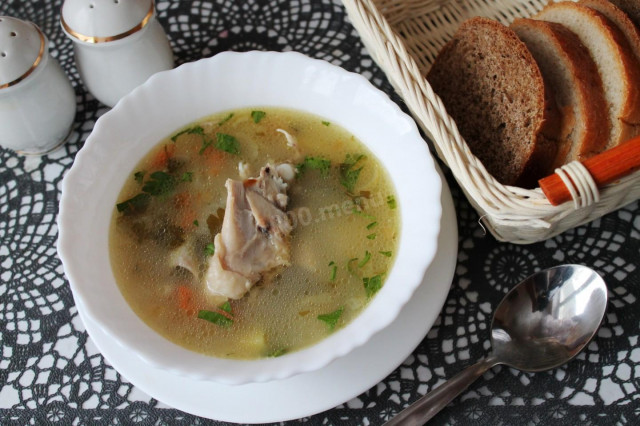Composition / ingredients
Step-by-step cooking
Step 1:
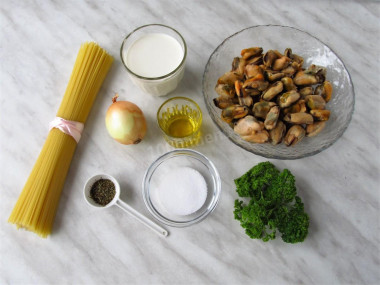
How to make spaghetti with mussels? Prepare the products. For cooking, it is better to use spaghetti from durum wheat varieties — they do not boil and are much tastier and healthier. Cream for sauce will suit any fat content, keep in mind that the calorie content of the dish will depend on it. I used 10%. Spices and spices can be used any to taste. Garlic goes well with mussels.
Step 2:
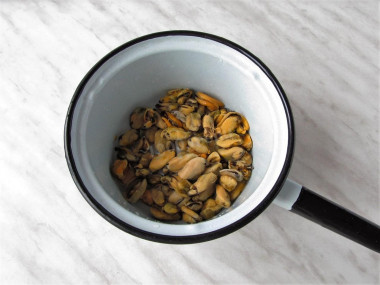
Pre—defrost frozen mussels by transferring them from the freezer to the refrigerator - so the defrosting process will be as delicate as possible. Then rinse the mussels with cold water, let it drain, transferring them to a colander.
Step 3:
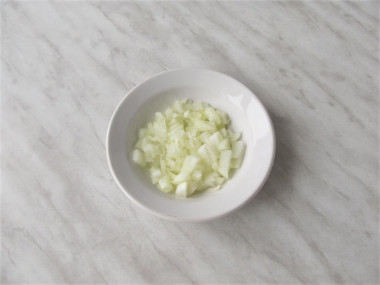
Peel, wash and cut onion into small cubes.
Step 4:
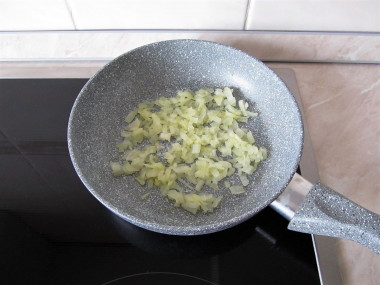
Heat the olive oil in a frying pan, put the chopped onion. Fry the onion over medium heat with frequent stirring until golden brown.
Step 5:
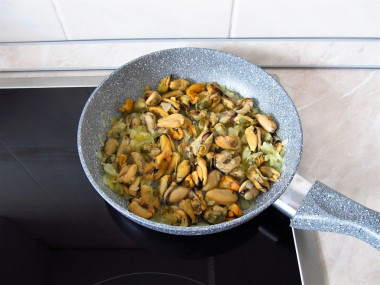
Put the mussels in the pan with the onion, mix. Fry everything together for 2 minutes until the moisture evaporates.
Step 6:
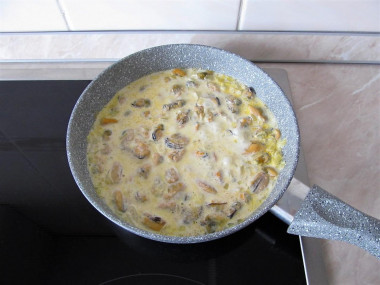
Pour in the cream, add salt.
Step 7:
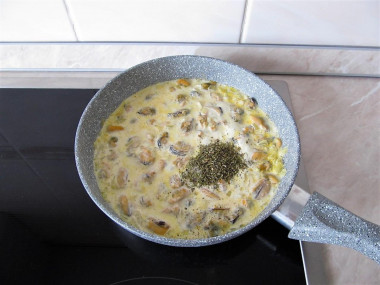
Pour in the herbs of Provence, mix. Wait for the sauce to boil. Simmer at a low boil for no more than 2 minutes. Remove the pan from the heat. Seafood should be cooked over medium heat and not exceed the cooking time so that the shellfish remain soft, tender and do not lose their taste qualities.
Step 8:
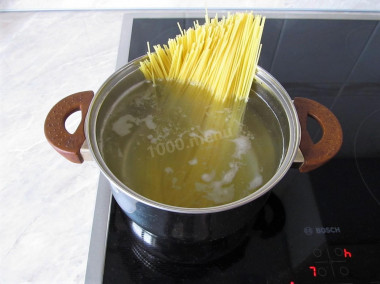
Boil the spaghetti at the same time. How to cook spaghetti? Lower them, without breaking, into boiling salted water, mix. Let the water boil. Cook the spaghetti over medium heat, stirring for 5 minutes until al dente - this is when the pasta remains a little firm.
Step 9:
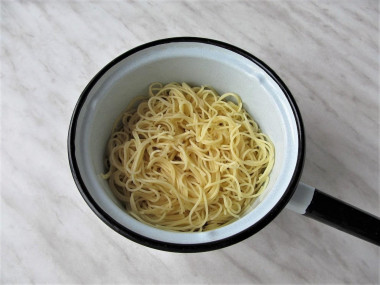
Flip the spaghetti into a colander, let the water drain.
Step 10:
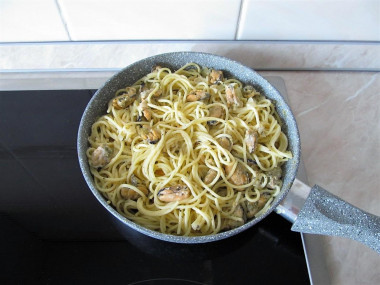
Put the spaghetti in the pan to the sauce with mussels, mix. Warm it up slightly.
Step 11:
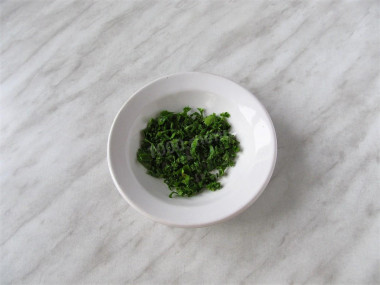
Wash the parsley, dry it, chop it finely. Sprinkle the spaghetti with mussels before serving with chopped herbs. Serve immediately. Bon appetit!
The quality of the seafood you buy is especially important. In frozen form, shellfish should not be stuck together. This indicates improper freezing, or that the product has been defrosted repeatedly. Mussels should not have a thick layer of ice. The exception is a special ice glaze.
Fresh mussels are characterized by a sea-specific aroma. The unpleasant smell of dampness, mud is evidence of a poor—quality product.
After buying frozen mussels, you should immediately put them in the freezer or immediately start cooking them. Secondary freezing is highly discouraged.
How to cook pasta properly, how to cook pasta al dente, how to choose a quality product to avoid disappointment and much more, read the article "Pasta and pasta - the subtleties of choice and secrets of cooking" .
For cooking, it is better to use filtered or bottled water that is neutral to taste. If you use tap water, keep in mind that it can give the dish an unpleasant characteristic taste.
Secrets, life hacks and all the most useful tips read in the article: "Cream and sour cream in cream sauce: what to do so that they don't curl up?"
The caloric content of the products possible in the composition of the dish
- Buttermilk - 36 kcal/100g
- Cream of 20% fat content - 300 kcal/100g
- Cream of 10% fat content - 120 kcal/100g
- Cream - 300 kcal/100g
- Parsley greens - 45 kcal/100g
- Salt - 0 kcal/100g
- Water - 0 kcal/100g
- Onion - 41 kcal/100g
- Olive oil - 913 kcal/100g
- Herb mixture - 259 kcal/100g
- Spaghetti - 338 kcal/100g
- Frozen Mussels - 82 kcal/100g

